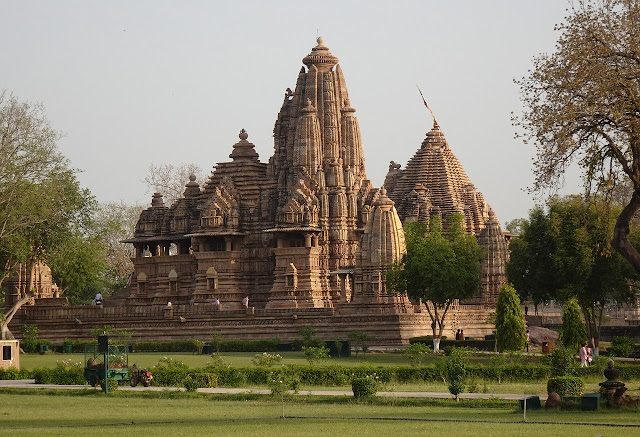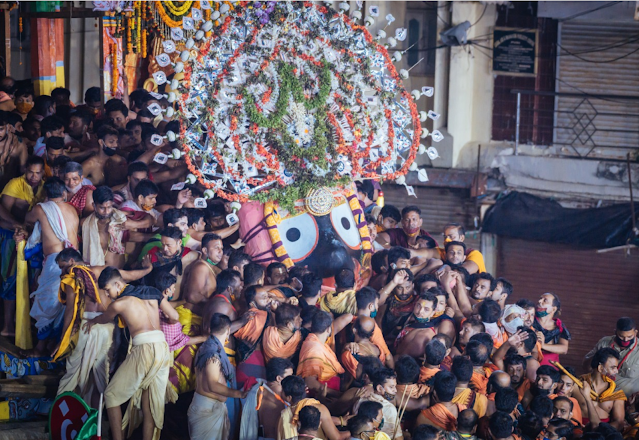Kailasa Temple, Maharashtra:
The Kailasa Temple in Ellora is an extraordinary architectural marvel, carved out of a single rock in the 8th century. Dedicated to Lord Shiva, this monolithic wonder stands as the world's largest rock-cut temple. Its intricate sculptures, detailed carvings, and awe-inspiring scale leave visitors astonished at the skill and dedication of the artisans who created it. Towering at 32 meters, it stands as a symbol of ancient engineering prowess. The sheer scale and precision of Kailasa Temple leave visitors awe-inspired, with its majestic sculptures, pillared halls, and intricate reliefs
Konark Sun Temple, Odisha:
Nestled along the shores of the Bay of Bengal, the Konark Sun Temple is a masterpiece of ancient Indian architecture. Shaped like a colossal chariot with intricate stone carvings, it honors the sun god, Surya. Every inch of this temple is adorned with exquisite sculptures, depicting celestial dancers, mythical beasts, and scenes from everyday life. The temple's colossal wheels, adorned with detailed sculptures, symbolize the solar chariot, capturing the cosmic journey of the sun.
Khajuraho Temples, Madhya Pradesh:
 |
| Kandariya Mahadev |
These temples are a rare expression of life without any prejudice or judgment about it. Built between 950-1050 AD by the Chandela Dynasty, these temples are known for their intricate and sensual sculptures, the temples of Khajuraho are a celebration of love, beauty, and spirituality. The historical records show that the Khajuraho temple site had 85 temples during the 12th century spread over 20 square kilometers, out of which only 25 are still there, others destroyed by Islamic invaders. The architectural brilliance and explicit artistry of Khajuraho have earned it a coveted spot on the list of UNESCO World Heritage Sites.
Meenakshi Amman Temple, Tamil Nadu:
Located in the ancient city of Madurai, the Meenakshi Amman Temple is dedicated to the goddess Meenakshi, an incarnation of Parvati, and her consort, Lord Shiva. Its towering gopurams (entrance gateways) adorned with vividly painted sculptures leave visitors awestruck. The sheer size of the temple will make you so puny, it's just overwhelming to see what humans can achieve if they have devotion in their hearts. The temple complex, with its intricate carvings, sprawling halls, and sacred tanks, offers a glimpse into the grandeur of Dravidian temple architecture.
A striking feature of the temple is the astonishing structure known as “Ayiramkaal Mandapam” or the Hall of Thousand Pillars and each pillar features high, ornate, bold sculptures that look life-like.
Brihadeeswarar Temple, Tamil Nadu:
Also known as the Thanjavur Periya Kovil, the Brihadeeswarar Temple is a testament to the grandeur of Chola architecture. Built by King Rajaraja Chola I in the 11th century, this towering structure is crowned by a massive monolithic dome known as the "Kumbam." The temple's intricate stone carvings and frescoes depict mythological stories and showcase the artistic brilliance of the Chola dynasty. The intricately carved sculptures, frescoes and the massive Nandi statue add to its divine allure. The temple's unique construction, using granite blocks, reflects the advanced engineering skills of the Chola dynasty. A UNESCO World Heritage Site, it remains an enduring marvel of South Indian artistry.
Dilwara Temples, Rajasthan:
Hidden amidst the rugged hills of the Aravalli Range, the Dilwara Temples are renowned for their unparalleled craftsmanship. Built by the Solanki dynasty in the 11th and 13th centuries, these Jain temples showcase breathtaking marble carvings, intricate detailing, and ornate pillars. Built between the 11th and 13th centuries, these temples dedicated to Jain Tirthankaras showcase unparalleled marble artistry. The delicate artistry and serene atmosphere make them a haven of tranquility.
Ranakpur Jain Temple, Rajasthan
Ranakpur Jain Temple, a marvel of architectural brilliance, stands as a testament to India's rich cultural heritage. Nestled in the Aravalli Range in Rajasthan, this 15th-century marvel showcases intricate marble craftsmanship, with 1,444 exquisitely carved pillars that support the temple's vast structure. The temple's celestial beauty lies in its detailed architecture, from the domes to the halls, reflecting the mastery of the ancient artisans. Dedicated to Adinatha, the temple exudes a sense of tranquility and spiritual serenity.
Shore Temple, Tamil Nadu
Situated on the shores of the Bay of Bengal in Mamallapuram, the Shore Temple is a UNESCO World Heritage Site and a testament to the architectural brilliance of the Pallava dynasty. Carved from granite, the temple's three shrines, dedicated to Lord Shiva and Lord Vishnu, showcase remarkable sculptures and bas-reliefs depicting divine narratives. Facing the sunrise, the temple creates a captivating spectacle during dawn, enhancing its celestial aura. With its monolithic rock-cut structures and intricate carvings, this temple beautifully combines Dravidian and Pallava architectural styles, making it a must-visit for history enthusiasts.
Somnath Temple, Gujarat:
One of the most sacred pilgrimage sites for Hindus, the Somnath Temple has been a symbol of resilience throughout history. It is said this temple was razed to the ground by a Turkish raider Mahmud of Ghazni at least three times but then again rebuilt by different kings, this temple is believed to have been originally built by Lord Krishna himself. Located on the western coast of Gujarat, it offers breathtaking views of the Arabian Sea and attracts devotees and tourists alike.
Jagannath Temple, Odisha:
The Jagannath Temple in Puri is one of India's most revered pilgrimage destinations. Dedicated to Lord Jagannath (a form of Lord Krishna), this temple is known for its annual Rath Yatra, where deities are taken on chariots pulled by devotees. There are many mysteries attached to this temple one of them being no cast shadowed by the temple. With its towering spires and vibrant rituals, it exudes a divine aura that draws millions of visitors each year.
India's ancient grand temples stand as awe-inspiring symbols of the country's rich cultural heritage and deep-rooted spirituality. From the magnificent rock-cut marvels to the intricately carved structures, these temples continue to mesmerize visitors with their architectural brilliance and timeless devotion. Exploring these sacred sites is an invitation to connect with India's ancient past, unraveling the mysteries and legends that have shaped the country's cultural and spiritual landscape for centuries.








